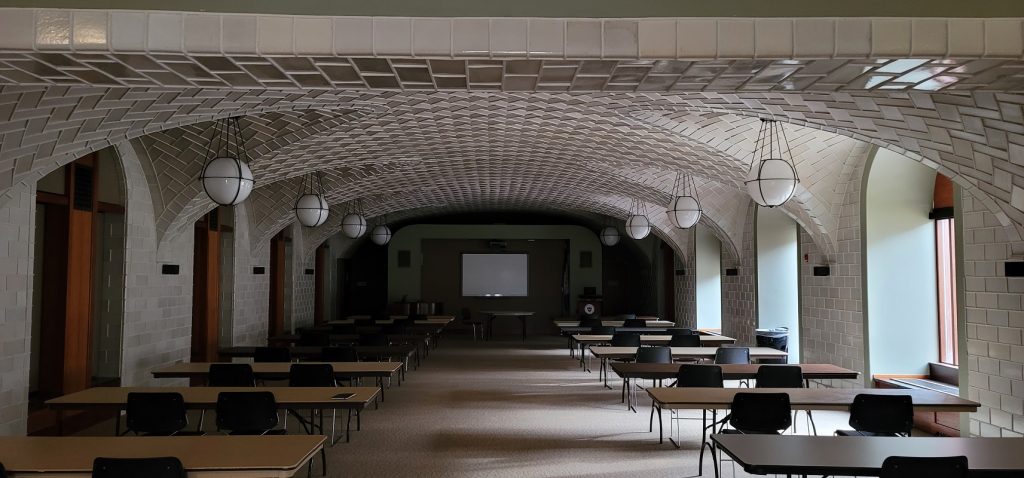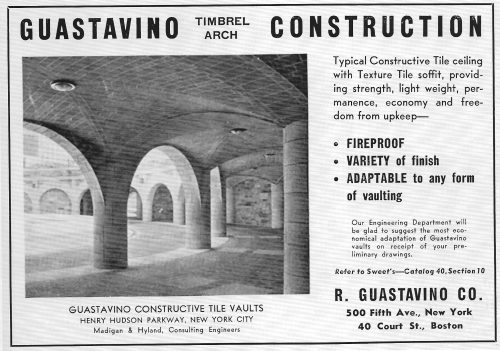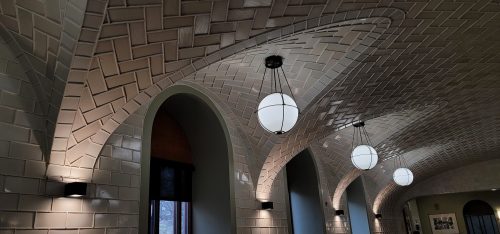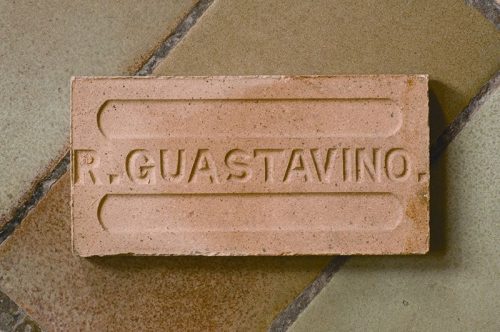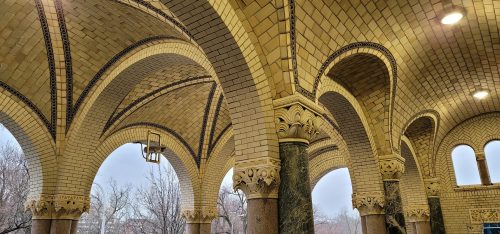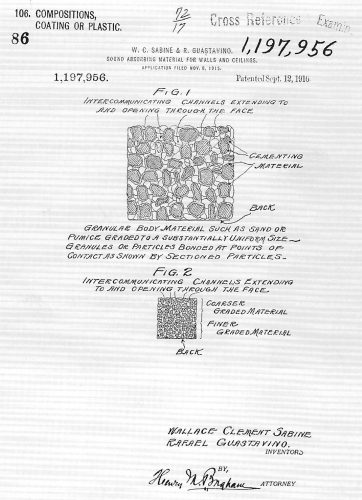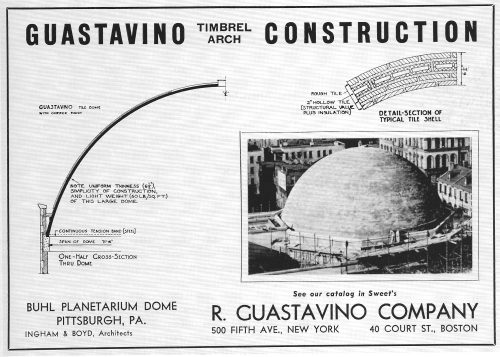2021.03.23 – Lecture 2
Rafael Guastavino and his son’s material innovations in building science with fireproofing, acoustics, thermal, weatherproofing, sanitation and daylighting, using traditional Catalan cohesive construction methods with thin terracotta tiles.
Boston Public Library (Boston, 1889-1895, Charles McKim architect) fireproofing innovation using non-combustible terracotta tiles and hydraulic cement in the cohesive construction structural tile vaults, patented by the Guastavino Fireproofing Company in 1891.
Bell Telephone Company (Pittsburgh, 1923, James T. Windrim architect) exterior weatherproofing innovation using decorative exterior finish glazed tiles in the cohesive construction structural tile loggia vaults, developed in 1894.
The Pittsburgh / Phipps Natatorium (Pittsburgh, 1908, Grosvenor Atterbury architect) interior moisture protection innovation using decorative finish glazed tiles in the cohesive construction structural tile vaults of Pittsburgh’s first monumental swimming pool, developed in 1894.
Mellon Residence Pool (Pittsburgh, 1917, E.P. Mellon architect) interior daylighting innovation using off-white colored glazed tiles to reflect natural sunlight across the cohesive construction structural tile vaults, developed in 1894.
Woburn Manufacturing Plant (Woburn, Massachusetts, 1900, R. Guastavino architect) converted old wooden church to plant for manufacturing standardized dimension Assyrian / Oriental thin tile bricks, developed in 1900.
Allegheny General Hospital (Pittsburgh, 1929, Edward York & Philip Sawyer architects) sanitation innovation easing cleaning and improved sanitation using colorized glazed tiles from watercolor schemes made by Rockwood Pottery in Cincinnati, developed in 1912.
Akoustolith Tile (New York, 1891-1924, R. Guastavino Jr. & Wallace C. Sabine) acoustic innovation using pre-cast concrete tiles containing minute pumice
particles creating small air spaces to absorb sound, patented in 1916.
Buhl Planetarium (Pittsburgh, 1938, Charles T. Ingham & William Boyd Jr. architects, 71.5 ft. span dome) thermal insulating innovation using hollow tiles to reduce internal heat loss in colder climates in single thin shell dome, developed in 1938.
Lecture Audio (podcast):
Download Lecture Notes

